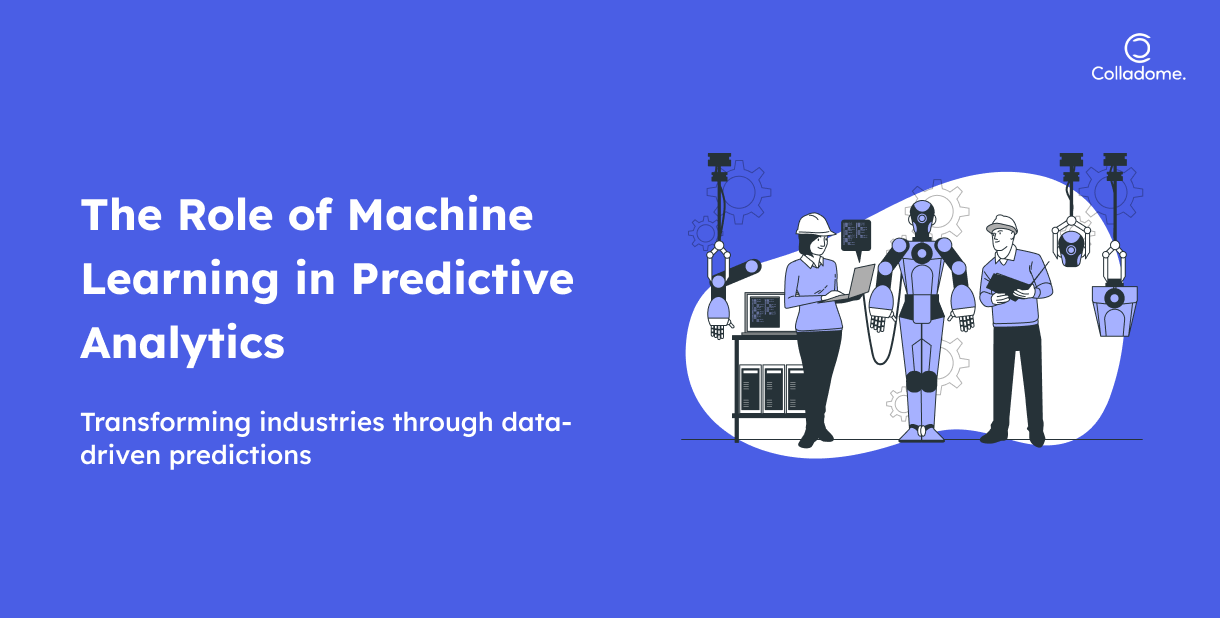Artificial Intelligence (AI) has evolved from a buzzword to a game-changer in the business world, revolutionizing how companies operate in 2024. Whether it’s automating repetitive tasks or making data-driven decisions at lightning speed, AI is now the backbone of modern business strategies. Among its most transformative aspects are machine learning (ML) and predictive analytics, which are helping businesses stay ahead of the curve.
So, what’s driving this AI revolution? Machine learning algorithms are enabling systems to analyze massive amounts of data, learn patterns, and make accurate data predictions—all without human intervention. When paired with predictive analytics, these tools allow businesses to anticipate trends, forecast demand, and improve operations like never before.
From business forecasting to real-world applications like retail product recommendations, supply chain optimization, and even predictive maintenance in manufacturing, AI’s impact is everywhere. By enhancing accuracy, saving costs, and boosting efficiency, ML improves predictive analytics to give companies a serious competitive edge.
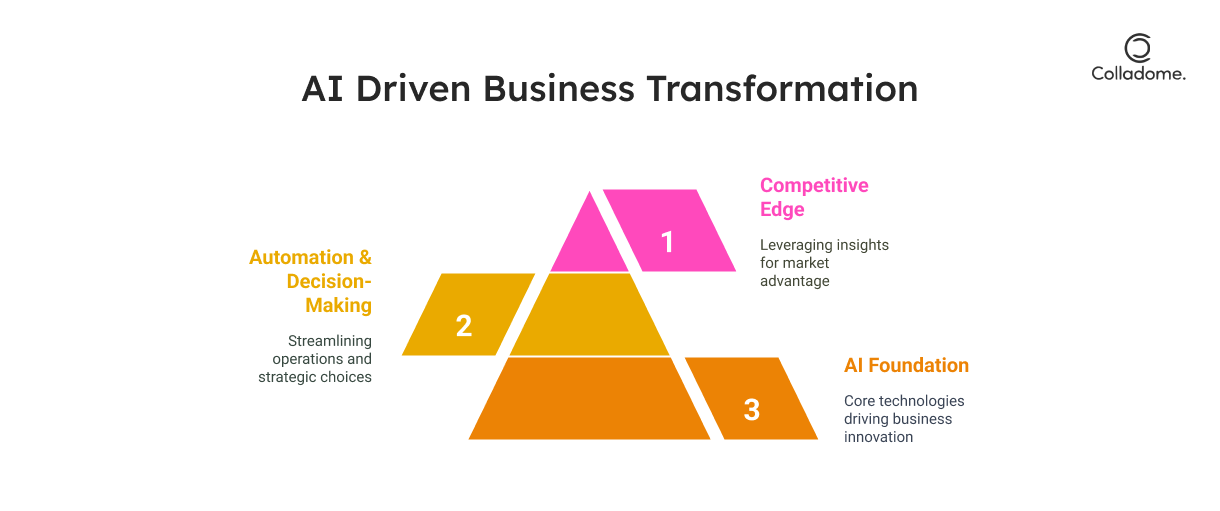
As businesses adopt AI-powered tools, the question isn’t if you’ll use them—it’s how soon. The future of operations is smarter, faster, and laser-focused on data-driven insights. AI in 2024 isn’t optional; it’s essential.
Why AI is Transforming Businesses
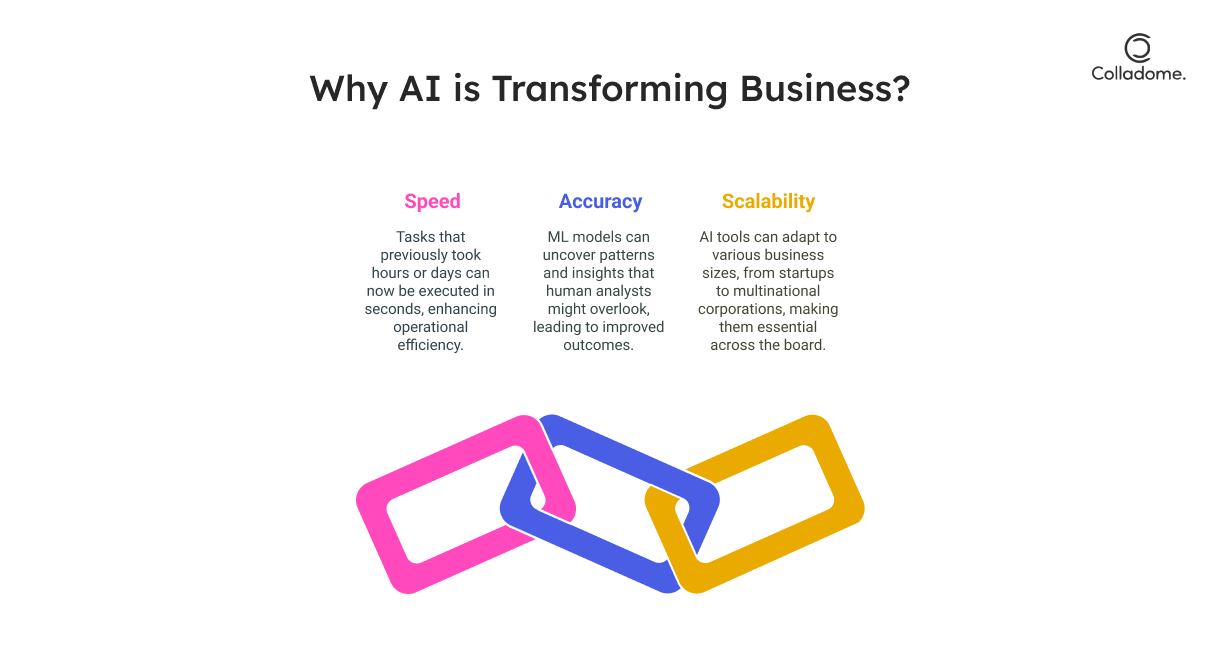
In today’s data-driven world, every business decision hinges on accurate and timely insights. But what good is a mountain of data if you can’t interpret it effectively? That’s exactly where Artificial Intelligence (AI) steps in and takes charge. By harnessing the power of machine learning algorithms and predictive analytics, businesses are not just analyzing data—they’re leveraging it to anticipate trends, make proactive decisions, and gain a competitive edge.
So, why is AI becoming the go-to solution in 2024? For starters, AI offers unparalleled speed. Tasks like analyzing real-time market trends or customer behavior, which once took hours or even days, are now done in mere seconds. It’s not just about speed; it’s also about accuracy. ML models identify patterns and insights that even the sharpest human analysts might miss, improving outcomes across all operations.
Another game-changer is scalability. Whether you’re running a small startup or managing a global enterprise, AI tools adapt seamlessly to different levels of complexity. They handle everything from simplifying logistics to predicting customer preferences, making them indispensable for businesses of any size.
And let’s be honest, ignoring AI in 2024 is like ignoring the internet back in the early 2000s. It’s not just a missed opportunity; it’s a decision that could cripple your ability to compete.
From automating repetitive tasks to supercharging business forecasting, AI has gone from being a luxury to a necessity. It’s time to embrace the transformative potential of machine learning and predictive analytics—because the future of business is already here, and it’s powered by AI. Don’t just keep up; stay ahead!
What Are Predictive Analytics and Machine Learning?
Let’s break it down in simple terms.
PREDICTIVE ANALYTICS

Predictive Analytics is all about using data to make forecasts about the future. Imagine having a crystal ball, but instead of magic, it’s powered by statistical techniques, machine learning models, and historical data. This combination helps businesses predict what’s likely to happen next—whether it’s forecasting sales, customer behavior, or market trends. Essentially, predictive analytics gives businesses a sneak peek into the future, so they can make smarter decisions today.
MACHINE LEARNING
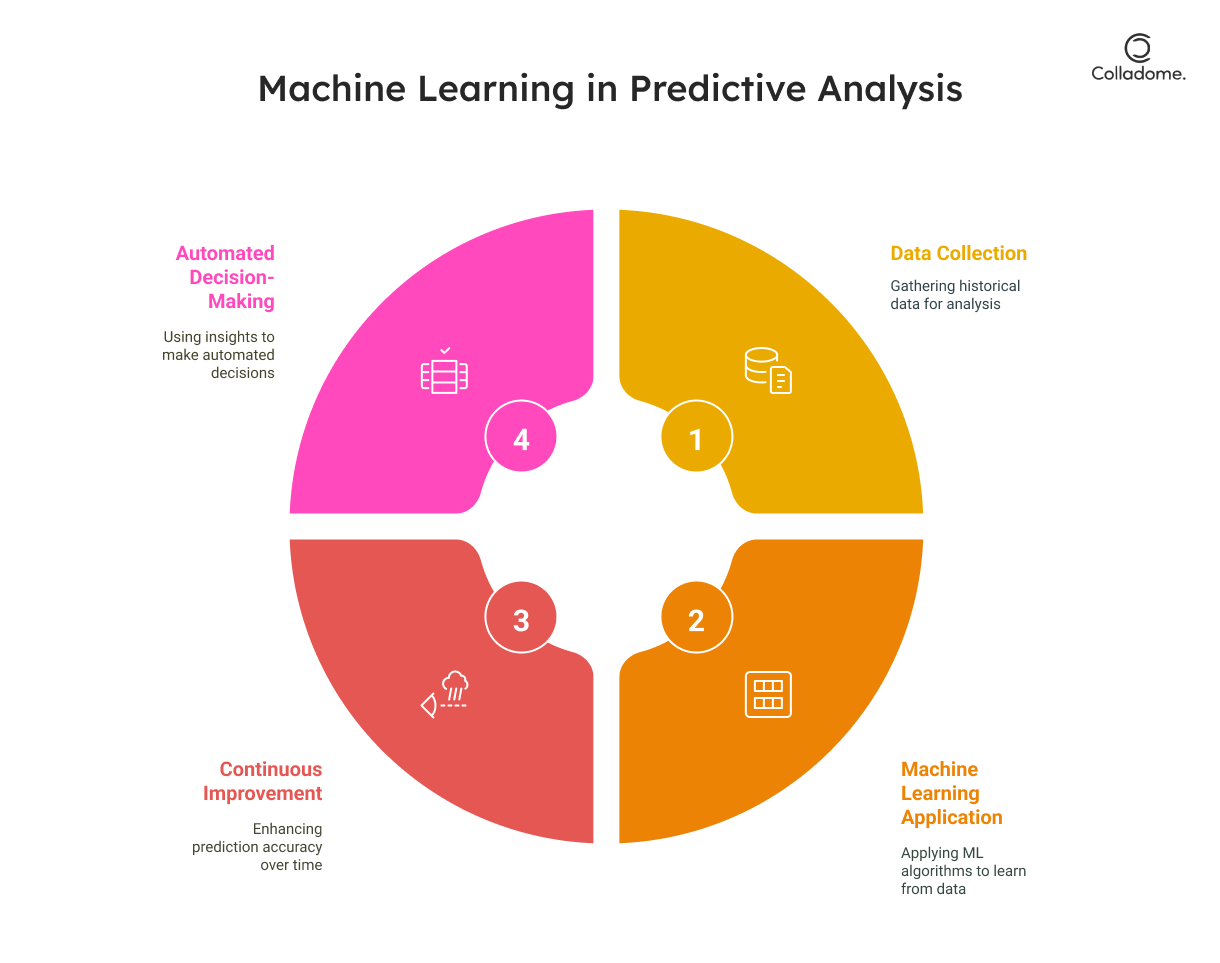
Now, let’s talk about Machine Learning (ML). ML is the engine behind predictive analytics. Instead of relying on static rules or assumptions, ML algorithms learn from past data to improve their predictions over time. Think of it like teaching a machine to get better at making decisions based on experience—no human intervention needed.
By using ML, businesses can automate complex processes, like business forecasting, and make predictions that only get more accurate as time goes on. It’s not just about making one-time guesses; it’s about building systems that continually improve and refine their decision-making.
In short, predictive analytics is the tool, and machine learning is the powerful tech that makes it work, helping businesses stay ahead of the game with data-driven insights.
How Machine Learning Enhances Predictive Analytics
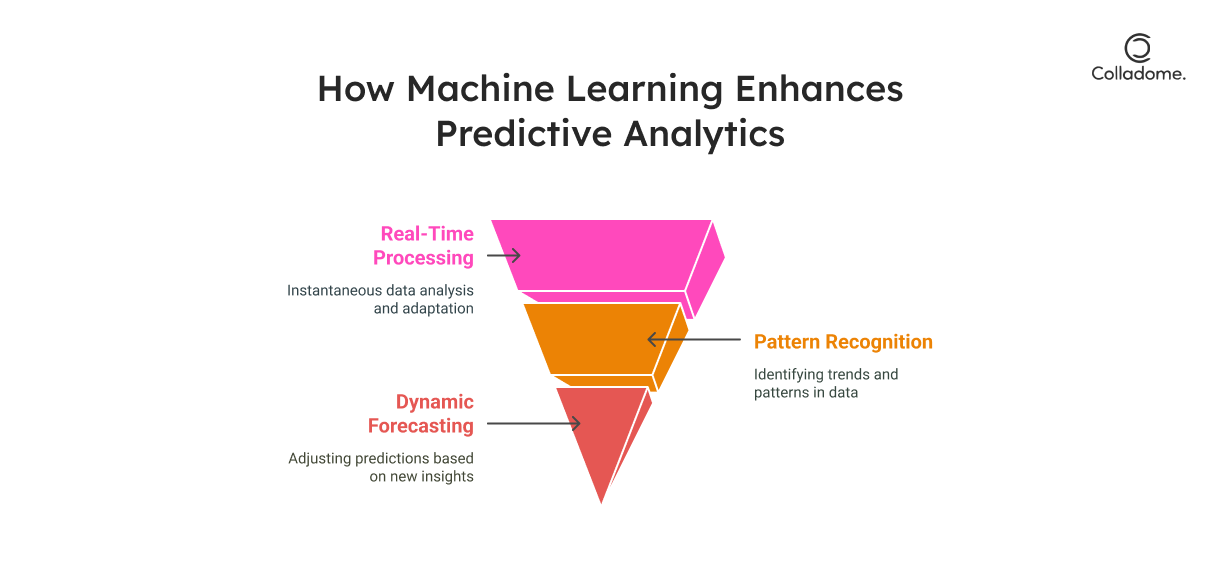
Predictive analytics has been around for a while, but in recent years, machine learning (ML) has taken it to a whole new level. Traditional forecasting methods would analyze past data based on pre-set rules, but machine learning has completely transformed how businesses can use data to make predictions. Let’s break down how ML enhances predictive analytics and why this combination is a game-changer for businesses in 2024.
Real-Time Data Insights
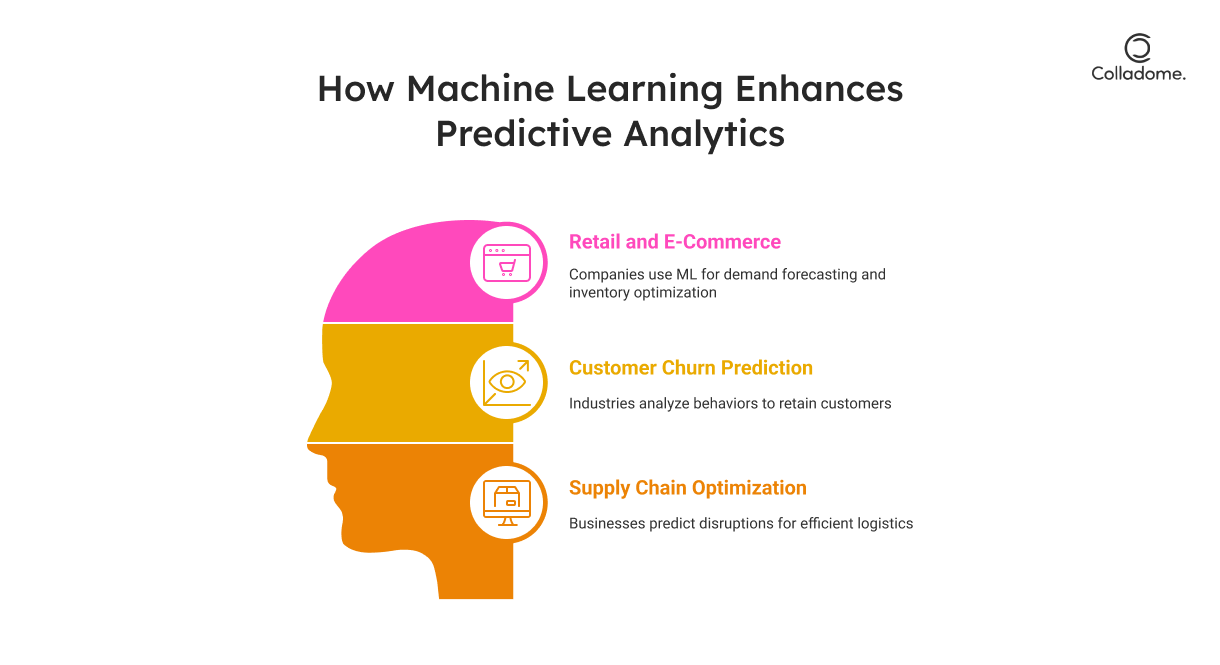
One of the biggest advantages of machine learning over traditional methods is its ability to adapt in real-time. Traditional predictive analytics models relied on a set of rules that were predefined by humans and didn’t change unless someone manually updated them. This means that if new data came in, the system might not be able to process or learn from it as quickly as needed.
With machine learning, ML algorithms can instantly process and learn from new data as it becomes available. This adaptability makes forecasts more relevant and accurate, as the model continuously learns from each new dataset, refining its predictions. For example, if there’s a sudden change in consumer behavior or a market shift, ML can quickly adjust its predictions to reflect these changes, giving businesses up-to-the-minute insights. This real-time processing is particularly useful in industries like retail, where trends can shift unexpectedly.
Improved Accuracy
Another standout benefit of machine learning is its ability to improve accuracy over time. Unlike traditional predictive models that often relied on simple assumptions or limited data, ML algorithms get smarter as they process more information. Each new dataset helps the algorithm refine its understanding of patterns, improving the accuracy of future predictions.
For example, let’s say a company is using machine learning for business forecasting. In the early stages, the algorithm might make a few rough predictions based on historical data. But as more data flows in—whether it’s new customer behavior, seasonal trends, or economic shifts—the ML model adjusts itself, making future forecasts even more accurate. This continuous improvement means businesses can make more informed, confident decisions as their predictions become more precise.
Dynamic Forecasting
Unlike static models, which are limited by their fixed rules, machine learning enables dynamic forecasting. Traditional models can only make predictions based on a set of variables they’ve been trained on, and any shifts in the market or data could lead to inaccurate results. With ML-powered analytics, however, the model evolves over time to account for new patterns and insights, making it far more flexible and responsive to changes.
For instance, think about predictive analytics in supply chain management. A static model may predict demand based on historical trends, but if an unforeseen event—like a global pandemic—disrupts supply chains, a traditional model might fail to provide useful insights. On the other hand, an ML algorithm can adjust its forecasts in real time, taking into account factors like new consumer buying behavior or shifts in global logistics. This dynamic adaptability is crucial for staying competitive in today’s fast-moving business world.
Real-World Examples of Machine Learning in Predictive Analytics
Let’s talk about how machine learning and predictive analytics are already changing the game in real-world applications.
-
Retail and E-Commerce:
Companies like Amazon use ML algorithms to predict seasonal demand, recommend products, and optimize inventory management. By analyzing vast amounts of customer data, these systems can predict what products will be in demand and when, allowing businesses to prepare their stock accordingly, reduce wastage, and ensure high customer satisfaction.
-
Customer Churn Prediction:
Businesses in telecom, finance, and subscription-based services use predictive analytics with machine learning to forecast customer churn. By analyzing past customer behavior and transaction history, ML models predict which customers are at risk of leaving. This enables businesses to take proactive steps, such as offering discounts or improving service, to retain these customers before they churn.
-
Supply Chain Optimization:
Companies like Walmart and UPS use machine learning-powered predictive analytics to anticipate disruptions in their supply chains, be it from weather conditions, transportation delays, or other external factors. By predicting where bottlenecks are likely to occur, businesses can adjust their logistics in real time, saving money and maintaining smooth operations.
Benefits of Predictive Analytics with Machine Learning
Now, let’s break down the specific benefits that predictive analytics with machine learning can offer:
-
Cost Reduction:
Better forecasting leads to more accurate demand predictions, which helps reduce wastage and optimize resource allocation. For example, companies can better match inventory levels with actual demand, avoiding overstocking or stockouts. This means less money spent on unsold goods and fewer lost sales due to lack of stock.
-
Increased Revenue:
By anticipating customer needs and behaviors, businesses can improve their marketing strategies and sales tactics. Personalized recommendations, tailored pricing models, and dynamic promotions powered by machine learning allow companies to target customers more effectively, leading to higher conversion rates and increased revenue.
-
Enhanced Decision-Making:
Machine learning provides actionable insights that replace gut feelings and assumptions. Instead of relying on guesswork, businesses can make decisions based on data-driven predictions, whether it’s forecasting sales, managing inventory, or planning long-term strategies. This removes the guesswork from important business decisions and leads to better outcomes overall.
Real-World Applications of Predictive Analytics in Industries
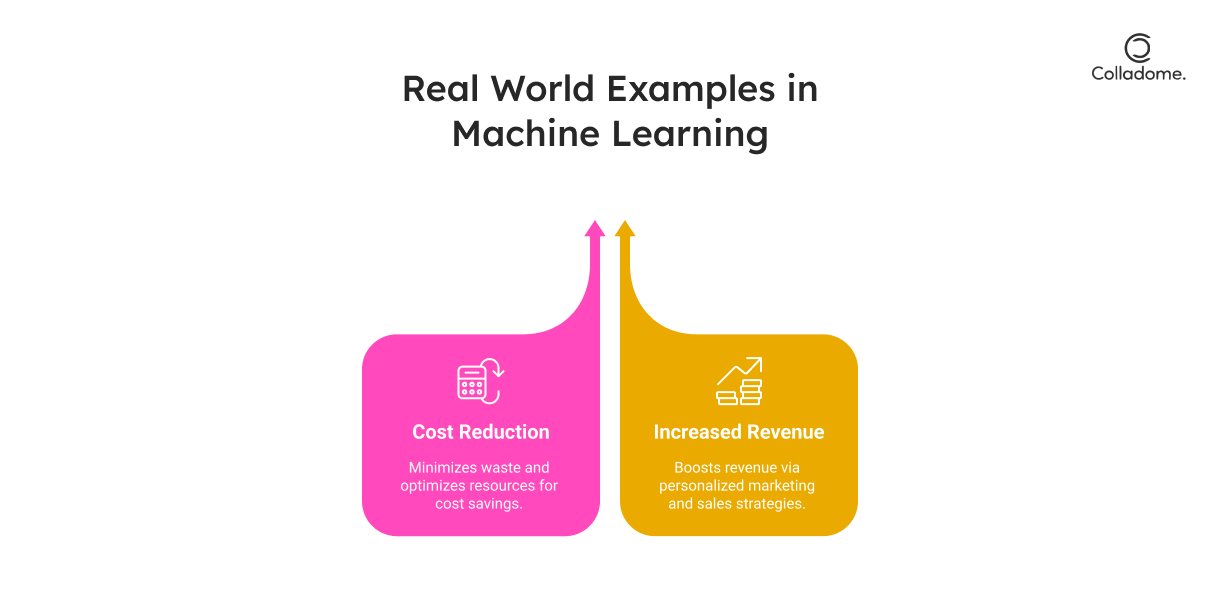
Predictive analytics powered by machine learning (ML) is making a huge impact across various industries, helping businesses improve efficiency, reduce costs, and deliver better outcomes. Let’s take a look at how it’s being used in three key sectors: retail, healthcare, and manufacturing.
1. Retail: Personalizing Shopping Experiences
E-commerce platforms like Amazon have mastered the art of personalization by leveraging predictive analytics. Using ML algorithms, Amazon analyzes a customer’s purchase history and browsing behavior to recommend products that are most likely to interest them. This creates a tailored shopping experience that feels more intuitive and engaging.
Impact: According to McKinsey (2024), 35% of Amazon’s sales can be directly attributed to personalized product recommendations. By predicting what products customers are likely to buy next, e-commerce companies can boost conversion rates and enhance customer satisfaction.
2. Healthcare: Preventing Readmissions
Hospitals are using predictive models to prevent patient readmissions by analyzing historical patient data. With machine learning, these models can identify patients who are at high risk of being readmitted based on factors like medical history, age, and existing conditions. By predicting which patients need additional care or intervention, hospitals can take proactive steps to improve outcomes.
Impact: AI-equipped hospitals have seen a 18% drop in readmission rates. This not only improves patient outcomes but also reduces healthcare costs by minimizing unnecessary hospital visits and treatments.
3. Manufacturing: Predictive Maintenance
In the manufacturing industry, predictive maintenance is revolutionizing how factories operate. By using ML algorithms to analyze data from IoT sensors attached to machines, manufacturers can predict when equipment is likely to fail before it actually breaks down. This allows them to schedule repairs ahead of time and avoid costly downtime.
Impact: Statista (2024) reports that downtime has decreased by up to 45%, saving manufacturers billions annually. By predicting equipment failures, companies can keep production lines running smoothly and reduce maintenance costs.
These examples show just how powerful machine learning and predictive analytics are in improving operations and driving growth across industries.
Facts, Figures, and Future Projections
- According to Gartner, by 2025, 75% of businesses will shift from traditional analytics to AI-driven insights.
- MarketsandMarkets reports that the predictive analytics market is expected to grow from $10.5 billion in 2023 to $21.5 billion by 2028.
Here’s a quick snapshot:
| AI in Industries | Current Adoption (%) | Projected Adoption by 2026 (%) |
| Retail | 67% | 90% |
| Healthcare | 45% | 80% |
| Manufacturing | 55% | 85% |
| ML Applications | Accuracy Improvement (%) |
| Customer Churn Prediction | 35% |
| Demand Forecasting | 40% |
| Fraud Detection | 50% |
The Future of AI in Business
AI is already transforming how businesses operate, but what does the future hold for predictive analytics and machine learning (ML)? As we move into 2024 and beyond, we can expect to see some exciting innovations that will further change the game for businesses looking to stay ahead of the curve. Let’s dive into three key trends that are shaping the future of AI in business.
1. Automated AI Models: Democratizing AI for All
One of the most exciting advancements in AI is the rise of automated AI models. These are tools that can essentially build themselves. Rather than relying on data scientists to manually create complex machine learning models, businesses will be able to leverage autoML (automated machine learning) platforms. These platforms use AI to automatically select algorithms, optimize them, and train them based on available data. This will dramatically reduce the time and technical expertise required to implement machine learning, allowing businesses of all sizes to access AI’s powerful benefits without needing a team of experts.
Impact: Automated AI models are a game-changer because they make AI more accessible. Smaller businesses that may have previously been excluded from using AI due to resource constraints can now leverage the power of predictive analytics to make data-driven decisions. This could democratize AI, allowing even the smallest companies to compete on a level playing field with industry giants.
2. Edge AI: Real-Time Predictions with Reduced Latency
Another key trend on the horizon is Edge AI. This involves running machine learning models directly on devices, such as smartphones, IoT devices, or factory equipment, rather than sending all the data to centralized cloud servers for processing. This on-device processing means that predictions and data analysis can happen much faster, with reduced latency and no need for constant internet connectivity.
Why is this important? In industries like healthcare, manufacturing, and autonomous vehicles, real-time data processing is crucial. With Edge AI, companies can make instant decisions on the spot, whether it’s detecting equipment failure, monitoring patient health in real-time, or enabling self-driving cars to react quickly to road conditions. Not only does this reduce response times, but it also improves security by minimizing the amount of sensitive data sent over the internet.
Impact: Edge AI is a game-changer for businesses that require real-time decision-making and have security concerns. By processing data on the device, companies can significantly reduce latency, increase efficiency, and ensure data privacy. This is particularly important in industries like healthcare, where immediate action can save lives, or in manufacturing, where equipment downtime can be costly.
3. Deeper Integration of AI into ERP and CRM Systems
In the future, we’ll also see deeper integration of AI into existing business software platforms, particularly Enterprise Resource Planning (ERP) and Customer Relationship Management (CRM) systems. Currently, many businesses use these systems to manage resources, finances, and customer interactions, but they often operate in silos with limited AI capabilities.
As AI evolves, businesses will have more sophisticated, AI-powered tools embedded directly into their ERP and CRM platforms. Imagine using machine learning to automatically analyze your company’s financial data in real-time, or to predict which customers are most likely to make a purchase based on past interactions. AI will not only streamline these processes but also improve the accuracy of forecasting, sales predictions, and resource allocation.
Impact: The integration of AI into ERP and CRM systems will give businesses a unified view of their operations, making it easier to make smarter decisions across the board. For instance, with predictive analytics, AI could forecast customer needs, optimize inventory, and even suggest the best time to contact a lead. This deeper level of integration will allow companies to move from reactive to proactive business strategies, ultimately improving efficiency and boosting profits.
Looking Ahead
The future of AI in business is bright. With innovations like automated AI models, Edge AI, and deeper integration into business systems, companies will be able to harness the power of AI like never before.
- Automated AI models will make AI more accessible, leveling the playing field for businesses of all sizes.
- Edge AI will deliver faster, real-time insights, enabling instant decision-making and improving data security.
- Deeper integration into ERP and CRM systems will enable companies to streamline operations, enhance customer relationships, and make data-driven decisions more effectively.
As these trends continue to evolve, businesses that embrace AI will find themselves not just keeping up, but leading the charge in their industries. AI in business isn’t just about optimizing operations—it’s about fundamentally transforming how we work and make decisions. The possibilities are endless, and as technology advances, the future of AI in business will only get more exciting.
Conclusion
AI, especially machine learning (ML) and predictive analytics, is truly transforming how businesses operate. From predicting customer needs to preventing costly operational failures, the applications of AI are nearly endless. Whether it’s predicting demand, improving business forecasting, or optimizing supply chains, machine learning is making data-driven decisions more accessible and powerful than ever before. The combination of AI and data allows businesses to not only react to current trends but also anticipate future challenges and opportunities.


